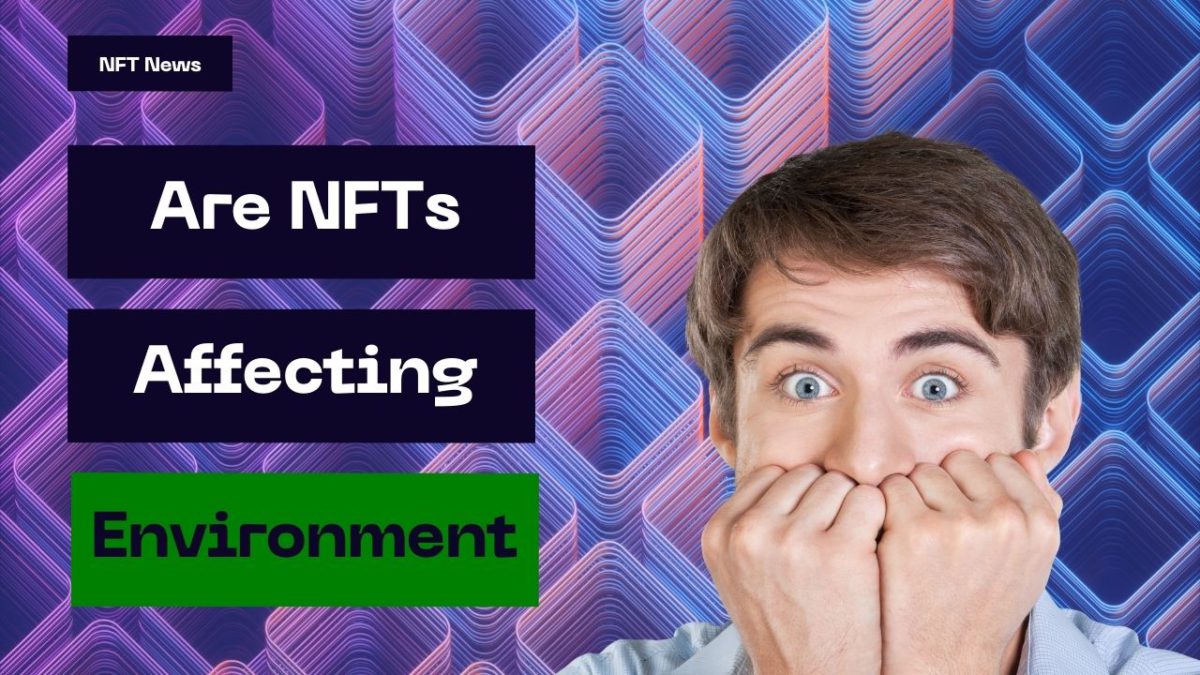How are NFTs affecting the environment?
A blockchain processes certain information and writes to the public ledger every time an NFT is coined, transferred, bought, or sold. Even while the amount of data processed and saved is tiny, the nature of blockchains implies that they can nevertheless consume a lot of energy. Does this imply that NFTs are affecting the environment?
NFT Explained In 5 Minutes – Non Fungible Token
Owning and investing in non-fungibles has become a public fascination, thanks to the development of NFT art, collectibles, gaming applications, and celebrity endorsements. The popularity of non-fungibles has surged in the last 18 months, with non-fungibles sales alone reaching $25 billion in 2021. It is nearly impossible to find people in the crypto sector who even knew what an NFT was, let alone participating in the market, just a year or two ago.
Not only is the industry almost as vast as the traditional art market, but the future potential appears to be almost endless, with metaverse and web3 integration a foregone conclusion.
However, the elephant in the room is the environmental impact of NFTs. While digital, the energy required to create, transfer, and even burn an NFT is orders of magnitude greater than most people anticipate, with blockchains like Ethereum requiring significant computer power to execute even minor actions.
As a result, it’s critical for every collector, investor, or producer to consider how NFTs are affecting the environment and the market’s problems in becoming more sustainable. So, let’s look at these difficulties and see where NFTs are headed to resolve them.
Understanding the workings of NFTs
We need to understand how NFTs work to know why they aren’t precisely green in their current form.
Non-fungible tokens use blockchain to verify and guarantee asset ownership. These blockchains are not in a single location but are distributed computers to keep track of transactions and data.
Because non-fungible tokens are one-of-a-kind and ultimately irreplaceable, each one is unique. Most NFTs currently using the Ethereum blockchain is credited with launching the non-fungible market with projects like CryptoPunks and CryptoKitties.
A blockchain processes certain information and writes to the public ledger every time an NFT is coined, transferred, bought, or sold. Even while the amount of data processed and saved is tiny, the nature of blockchains implies that they can nevertheless consume a lot of energy.
CO2 emissions from mining
Blockchains like Ethereum still use a proof-of-work consensus algorithm. This means that the computers on the blockchain must compete to solve complex cryptographic issues, with the first to receive gas fees as a reward for their work. This is referred to as “mining.”
When it comes to NFTs, this mining is the main problem. Miners will invest in increasingly powerful gear to tackle more proof-of-work challenges as the blockchain grows in size to remain lucrative. As a result, miners continually increase the energy they consume from the electrical grid.
Countries are continuously looking for ways to establish a more sustainable power infrastructure. The reality is that coal is still used to generate a significant amount of electricity. These energy sources contribute to climate change by emitting greenhouse gases.
Stay informed with daily updates from Blockchain Magazine on Google News. Click here to follow us and mark as favorite: [Blockchain Magazine on Google News].
Get Blockchain Insights In Inbox
Stay ahead of the curve with expert analysis and market updates.
latest from tech
Disclaimer: Any post shared by a third-party agency are sponsored and Blockchain Magazine has no views on any such posts. The views and opinions expressed in this post are those of the clients and do not necessarily reflect the official policy or position of Blockchain Magazine. The information provided in this post is for informational purposes only and should not be considered as financial, investment, or professional advice. Blockchain Magazine does not endorse or promote any specific products, services, or companies mentioned in this posts. Readers are encouraged to conduct their own research and consult with a qualified professional before making any financial decisions.

 Bitcoin
Bitcoin  Ethereum
Ethereum  Tether
Tether  XRP
XRP  Solana
Solana  Dogecoin
Dogecoin  USDC
USDC  Lido Staked Ether
Lido Staked Ether  Cardano
Cardano  TRON
TRON  Avalanche
Avalanche  Chainlink
Chainlink  Toncoin
Toncoin  Wrapped stETH
Wrapped stETH  Shiba Inu
Shiba Inu  Sui
Sui  Wrapped Bitcoin
Wrapped Bitcoin  Hedera
Hedera  Stellar
Stellar  Polkadot
Polkadot  Hyperliquid
Hyperliquid  WETH
WETH  Bitcoin Cash
Bitcoin Cash  LEO Token
LEO Token  Uniswap
Uniswap  Litecoin
Litecoin  Pepe
Pepe  Wrapped eETH
Wrapped eETH  NEAR Protocol
NEAR Protocol  Ethena USDe
Ethena USDe  Aave
Aave  Aptos
Aptos  Internet Computer
Internet Computer  USDS
USDS  Cronos
Cronos  POL (ex-MATIC)
POL (ex-MATIC)  Ethereum Classic
Ethereum Classic  Mantle
Mantle  Render
Render  Bittensor
Bittensor  Artificial Superintelligence Alliance
Artificial Superintelligence Alliance  MANTRA
MANTRA  WhiteBIT Coin
WhiteBIT Coin  Monero
Monero  Arbitrum
Arbitrum  Dai
Dai  Filecoin
Filecoin 



